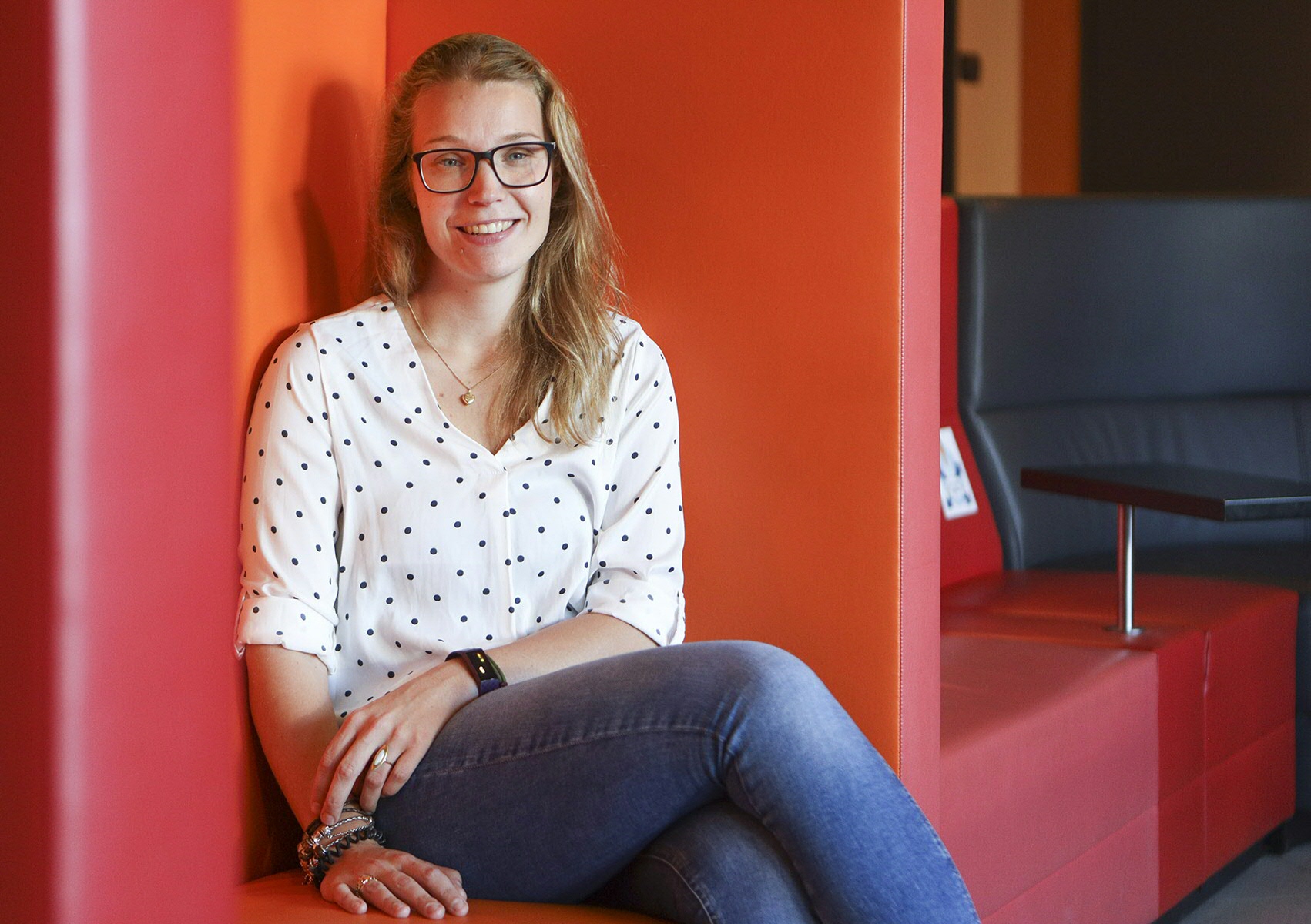Equality at the surgery

When you’re sitting opposite your GP, does it make a difference whether you’re a man or a woman? For some problems, it obviously does. But for other ailments, such as headaches, dizziness, or backache, gender should not, in principle, play a role. However, the procedure still appears to be different. Research conducted by Aranka Ballering has revealed that men are more likely to be given a physical examination and referred to a specialist than women.
Text: Nynke Broersma / Photos: Henk Veenstra
PhD student Aranka Ballering is studying gender and sex differences in common physical ailments. She wants to find out whether certain symptoms are more prevalent and last longer in men or women, and whether the diagnosis and treatment are different.
Ballering’s research is giving her a unique look into the minds of GPs. She is using a database to monitor the entire procedure for thousands of anonymized patients who visit their GPs: from the moment that they arrive at the surgery with an ailment, through to the diagnosis made by the GP, and the treatment. When Ballering talks about the data she is using, her face lights up as if she has stumbled across a huge playground for young researchers. ‘That’s exactly what it is!’ she agrees. ‘It is a fantastic database that allows me to see exactly which decisions a GP has made.’
Big differences
One of the reasons that Ballering is immersing herself in this data is to answer the question of whether GPs act differently if their patient is a man or a woman. Ballering’s conclusion is clear: ‘Yes, they do. If men come to the surgery with a headache, backache, or another symptom that is not necessarily gender-related, they are more frequently referred to a specialist than women are. Men are also more likely to be given a physical examination, such as an x-ray or an ultrasound, than women. Women are given more blood tests. I had not expected these differences to be quite so marked.’
Missed diagnosis
Men are not only physically examined more frequently, but they also receive a diagnosis more often. Ballering’s study shows that women are more often left with unexplained ailments, and it is difficult to determine why relatively few women discover the cause of their symptoms. ‘Medical science is heavily biased towards men. When diagnostic tests are developed, the functionality tends to be tested on men, for example. This could be a reason for the tests not working as well on women, and for certain signs being missed. And because women’s tests are more often inconclusive, women are less likely to be referred for an x-ray or ultrasound. This results in a vicious circle that is difficult to break’, explains Ballering.

Up in arms
If a woman discovers that she is being paid less than her male colleague for precisely the same work, she will probably start negotiating with her employer ASAP. So, should we be up in arms now that we know that women are less likely to be physically examined than men? It is not quite that straightforward in the healthcare sector, according to Ballering. ‘GPs know from experience that more often than not, if a woman is given an x-ray, nothing will show up. So they probably think: why should I expose this woman to radiation if I don’t expect to find anything?’
COVID-19 vaccine
So, even if men and women are given exactly the same physical examinations, it will not necessarily produce better results. What might help, however, is if more women get involved in clinical trials, explains Ballering. ‘Take the COVID-19 vaccine, for example. No distinction between men and women is made in terms of efficacy, but it later became clear that women could probably be given a lower dose of the vaccine, or a different vaccine. Excluding women from trials of this kind means that they are receiving suboptimal care.’

COVID-19 tests
Ballering also explored the relative chances of being diagnosed with, or tested for, COVID-19 for men and women. She studied the first wave of the pandemic, when tests were in short supply and not freely available. She found no difference between men and women, until she and her colleagues looked at the group of healthcare workers. It turned out that the available tests were used for male healthcare workers much more often than for their female counterparts. In addition, more men were diagnosed with COVID-19 than women.
‘This was very strange’, says Ballering. ‘I couldn’t help wondering whether it was a case of gender inequality. Or: maybe they weren’t given tests just because they were men, but because men with COVID-19 had more serious symptoms than women. You can see gender inequality everywhere if you look hard enough, but you must also be prepared to see the different shades of an issue and wonder whether some differences are actually justified.’
Keep on learning
Ballering has been one of the Royal Netherlands Academy of Arts and Sciences (KNAW) ‘Faces of Science’ since last March. Young, talented scientists write and talk about their work to give prospective students an idea of life as a researcher. The fact that this particular role was made for Ballering is evident from her answer to the question of what she likes most about her work: ‘It’s actually my job to keep on learning! I just love finding things out and broadening my knowledge.’
Ballering doesn’t know which direction her career will take after her PhD, but one thing is certain: ‘I’m staying in the world of science!’
More informatie
- Aranka Ballering
- Faces of Science blogs (in Dutch)
More news
-
15 September 2025
Successful visit to the UG by Rector of Institut Teknologi Bandung
